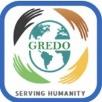-
Who We Are
WHO WE AREThe International Organization for Migration (IOM) is part of the United Nations System as the leading inter-governmental organization promoting since 1951 humane and orderly migration for the benefit of all, with 175 member states and a presence in over 100 countries. IOM has had a presence in Somalia since 2006.
About
About
IOM Global
IOM Global
-
OUR WORK
Our WorkAs the leading inter-governmental organization promoting since 1951 humane and orderly migration, IOM plays a key role to support the achievement of the 2030 Agenda through different areas of intervention that connect both humanitarian assistance and sustainable development. Across Somalia, IOM facilitates transition of Internally Displaced Persons (IDPs) and refugees towards durable solutions by providing services and support for Migrants and Mobile Populations.
Cross-cutting (Global)
Cross-cutting (Global)
- Data and Resources
- Take Action
- 2030 Agenda
Based on successful implementation of Phase 1 and additional funding totalling USO 43.7 million from the World Bank, EU, and USAID, Phase 2 of the programme targets to maximize impact in key displacement affected towns and urban centres. Geographical targeting will be extended to both primary urban centres covered in Phase 1 and intermediary towns to buffer primary urban centres from the shock of continued mass displacement flows.
As a core component of sustainability, Danwadaag will scale-up a government-led referral system between relevant local authorities, HDPN actors, and DAC communities. This coordination platform will first map out and differentiate the needs and vulnerabilities of recent and protracted IDP populations and link these with relevant donor-funded HDPN programmes and other locally-led initiatives aimed at urban recovery and resilience-building. The ultimate goal of this model, the first pilot is currently underway in Baidoa, is to update existing government-owned community action plans and humanitarian response and recovery strategies with the fast-changing needs and priorities of different DAC profiles and provide a reference point to guide targeting decisions and priority-setting across the nexus. This novel approach - embedded in local governance structures - creates a bridge between local priorities and the layering efforts of humanitarian, development, and peace actors.
Overall Objective
Reduction in the /DP caseload in Somalia through long-term sustainable solutions for the current displaced population (primary urban centres) and mitigating new displacement (strategic towns.
|
OUTCOME 1: |
Strengthened Government capacity to lead on durable solutions processes at Federal Government of Somalia (FGS), South West State, Jubaland, BRA and district levels. |
| OUTCOME 2: |
DACs have stronger land tenure security, reduced risk of forced evictions, and improved access to documentation through a multi-sectoral government led community focused, area-based approach. |
|
OUTCOME 3: |
Improved informal settlement conditions through access to sustainable basic services with integrated livelihood. |
| OUTCOME 4 |
Targeted DACs are buffered against climate and conflict related shocks and long-term progress is protected. |
| OUTCOME 5 |
Durable solutions programming and decision-making processes at national and regional levels are informed by knowledge and evidence generated by the programme (influencing/ learning) |
| Partner Organization | Roles | Responsibilities |
|---|---|---|
|
International Organization for Migration |
Consortium leader | Lead coordination and implementation of activities |
 Concern Worldwide (CWW) |
Consortium member |
Support learning and knowledge management component |
|
Norwegian Refugee Council (NRC) |
Consortium member | Support learning and knowledge management component |
|
Regional Durable Solutions Secretariat (ReDSS) |
Learning Patner | Support learning and knowledge management component |
|
Gargaar Relief Development Organization (GREDO) |
Local NGO partner | Ensure local perspectives and ownership shape and influence |
|
Jube Foundation |
Local NGO partner | Ensure local perspectives and ownership shape and influence |








